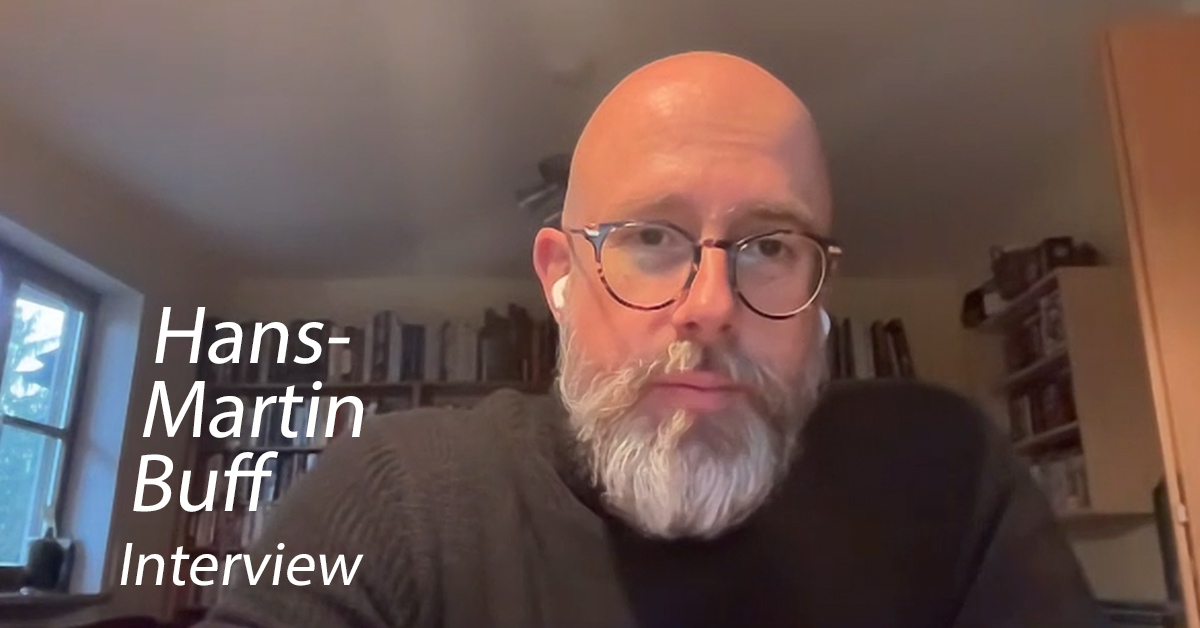- Article
- Read in 23 minutes
Interview with Hans-Martin Buff (Peter Gabriel i/o Dolby Atmos Mix)
In January 2024, we took part in a Dolby Atmos listening session at Hans-Martin Buff’s studio in Berlin. A bit later, an interview followed. Read the transcript here.
After the i/o In-Side Mix listening session in Hans-Martin Buff’s msm-studio in Berlin, we had more questions and got the opportunity to speak to him again via Zoom.
The interview was conducted by Christian Gerhardts and Tom Morgenstern with Hans-Martin Buff on February 29th, 2024.
Genesis News Com [GNC]: Why don’t we start with what kind of training you had?
Hans-Martin Buff: In my youth, I played a lot in bands and enjoyed writing songs. But I always realised that I wasn’t a musician. It always irritated me when people who could play three chords said they were musicians just because they liked playing the guitar. I was later allowed to work with many real musicians. Prince is probably the best example. When he and his guitar sat together, all the bling-bling pop star stuff was gone. Then there was just a conversation between two old friends. And I never had a friend like that. So for me, musical instruments were always a means to an end.
Then I actually wanted to become a journalist and I did so straight away. Immediately after leaving school in 1988, I worked at the then new private radio station Radio 7, which went well, but a funny thing happened – I lost interest. After a few detours, I moved to America because I had friends there. In America, I initially just squandered my father’s money, who supported me a little every month (laughs). Then a friend of mine started at a sound engineering school.
I went there too, and after that I was lost to the world. I thought it was totally cool. And maybe I should mention what opened the door a bit before school: I’m a very big Beatles fan and sometime in the late 80s I found a book by a Mark Lewisohn called The Beatles Recording Sessions, in which he describes every Beatles day in the studio. And I thought, well, if it’s this much fun to be in the studio, then it can’t be that bad.
GNC: And how did you get into Dolby Atmos?
Hans-Martin: I was actually always extremely sceptical about anything that happened beyond two speakers, because the surround mixes that I was allowed to do from time to time since the late 90s received neither praise nor blame. They simply disappeared on the shelf. For the very simple reason that neither the artist nor the majority of fans have ever heard them. My scepticism only subsided six years ago when a friend played me headphone versions of surround mixes.
He put normal headphones on me and I listened to Wish You Were Here and Sgt. Pepperin the 5.1 surround mix, simply via headphones. Looking back, it didn’t sound that great, but it basically worked. And I thought that was a total game changer. Because I’ve always realised that you can make great music with more space. But if nobody can hear it, why should I do it? For me, music is communication. And that’s why the headphones were a game changer for me. Anyone can use headphones. Absolutely anyone. That’s the story.
GNC: Apart from Prince, who are the more well-known names that are relevant to you in your sound career?
Hans-Martin: I’ve been working regularly with the Scorpions for 16 years now. Many records were produced by others and I contributed various things as a sound engineer. The last record, I also prodiced together with the Scorpions. Mousse T. was really big in my early days in Germany. His biggest hit was Sexbomb with Tom Jones, but above all he’s a really, really good producer; a talent, which he unfortunately doesn’t utilise that much anymore. We’ve done a lot together – everything from his own stuff to remixes, productions for Roachford, Die Prinzen – so it’s really a wild picture. What else? A lot. Among my platinum discs are some from Live and No Doubt. But if you want to see what’s out there, have a look at my playlists on Apple Music or at Discogs.
[See links at the end of the interview, editor’s note]
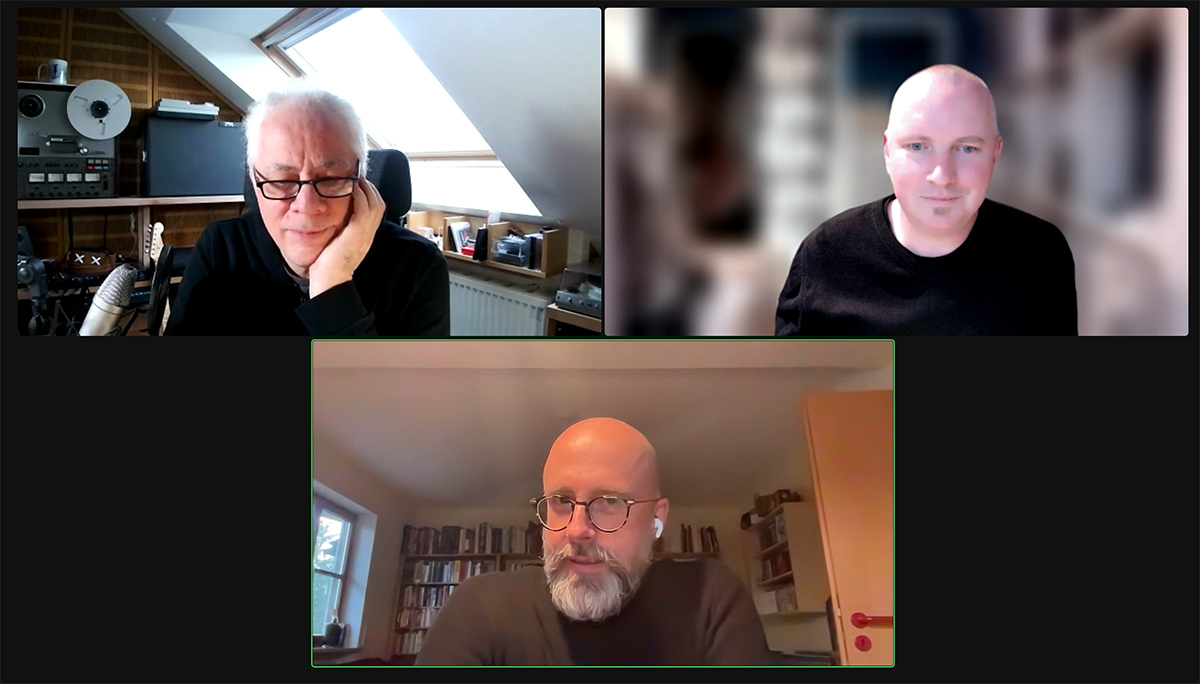
GNC: We especially noticed that you did something for Roachford. He also ended up in the Genesis circle. That was probably the album with Mousse T.?
Hans-Martin: That’s right, he’s one of the vocalists in Mike Rutherford’s band now. Yes, it was Word Of Mouth, the album with Mousse T..
GNC: Let’s get back to the topic of Atmos – can you explain how this development in the business came about?
Hans-Martin: In 2021, Apple and Dolby announced that they were now working together. Apple wanted a lot of Dolby Atmos on their streaming service. And the major record companies quickly got on board. Especially Universal – which is the biggest of the three [there are only three big record companies left: Universal, Warner and Sony, editor’s note]. But Warner also joined in quickly. Sony took a little longer, which is also due to the fact that they have their own Dolby Atmos-like format, Sony 360. So, they all got together and said “we’re doing this now”. And then Atmos was basically handed down to the troops: “You’ll deliver Atmos to us now, please”. Which of course means that someone has to do this Atmos stuff.
But nobody was prepared for it, not even creatively – nobody knew what it was really supposed to do, how good music works in Dolby Atmos. As Christian knows, this is the reason why the msm-studio in Berlin exists: Above all, it’s a listening environment where you can show people what Atmos is actually about. And there is a huge difference between listening to Dolby Atmos in a great room like this versus listening to it on a soundbar or headphones. Even if it works there. With a proper speaker setup, you understand what Dolby Atmos can do musically.
At first, an amazing amount of bad compromises were made to satisfy the Atmos hunger, but now the signs slowly are pointing towards quality. Apple is really helpful, for example (I don’t know if this is known in the non-music world); they now pay ten per cent more money for streams that are available in Atmos than for pure stereo stuff. To encourage people to generate good Atmos content with enthusiasm. At the same time, however, we are not yet ready to upload pure Atmos music. Originally, we actually wanted to release the In-Side mixes independently, not linked to stereo. Now you can usually hear the Dark-Side mix when Atmos is deactivated. That wasn’t the plan. But there was no other way.
GNC: Yes, I can still remember when the first Atmos song came out, everyone wondered why it was only stereo when you downloaded it.
Hans-Martin: Yes, I was surprised too. But it was also a relatively new plan at the time to release the In-Side together with the second mix for the new moon. At the time, I was surprised that Peter hadn’t yet approved my In-Side mix for the January full moon. But Peter and his team had only finalised the multi-moon plan with the release of Panopticom. I think it’s a great plan.
GNC: I [Tom] waited until October, then I bought an Apple TV so that I could at least listen to the Atmos mix on my 5.1 system at home. I was really keen on that. I tried all sorts of other things – listening to it on my desktop or something. But then in October I heard the thing in 5.1 for the first time and – well, I don’t have ceiling speakers and the like – but it really blew me away. I’d heard the stereo mixes before and now it sounded completely different. So, I said: Yes, this is Peter Gabriel’s new album. Forget the stereo mixes.
Hans-Martin: Keep on talking…
GNC: Did the understanding and acceptance of Dolby Atmos then grow? How did that work out with Peter Gabriel?
Hans-Martin: At the moment, there are quite a few boys and not too many men among those who are doing Dolby Atmos. Because this turn towards Atmos has happened so quickly. And because not everyone has the creative foresight of Peter Gabriel – together with the will to spend the money.
GNC: You said that you originally worked on other things with Real World before i/o came along. What was that exactly?
Hans-Martin: After I became interested in this whole 3D audio thing, I really dug deep into it, initially in connection with a Master’s degree programme, a so-called master of professional practice. This is a practice-based course with an academic degree, for which the student offers a project, which then becomes the central focus of their studies. I had two projects, a record with songs of mine that I produces specifically for binaural 3D, and I wrote a book. It’s in German and it’s called Überall-Musikproduktion in 3D Audio für Kopfhörer [Everywhere-music production in 3D for headphones].
There’s nothing in there about Dolby Atmos because, as I said, it was only about headphone 3D. The Atmos-Apple-Dolby-record company get-together with its many consequences had not yet taken place. I presented my 3D music to the aforementioned Mousse T., and he said I should play it to Andreas Sennheiser, one of the Sennheiser owners. And then he came round, I played him my music and Andreas said: “Peter Gabriel wrote to me to see if I know anyone who does binaural. I’ll see if he wants you.” And then a few weeks later I had an email in my inbox: “Hello, my name is Peter Gabriel. I’d like to do this and that”. Could I help him? – And then I was able to help him.
GNC: And what happened next?
Hans-Martin: Mike Large, who has been organising Peter Gabriel’s creative madness and making it possible in an admirably loyal way for a very long time – a really, really great guy – and Oli Jacobs, at the time still the chief engineer at Real World Studio, now a three-time Grammy award winner and living in America in the circle of Taylor Swift and Jack Antonoff, were in cc of that first email.
The three of us had one or two very entertaining Zoom meetings with Peter, in which I also talked about my approach to the whole binaural thing. Later, I was once at Real World Studios to record the artist Ada Morghe and I was asked if I would like to take part in a current project. It was paid for by the government: there’s a pot of money called “Innovate UK” and we used it to try out how to stream immersively (meaning 3D, but not Atmos) for radio. In this case with the radio station NTS. So there were several sessions over a longer period of time. And I hadn’t met Peter in person at that point, he observed the whole thing with interest.
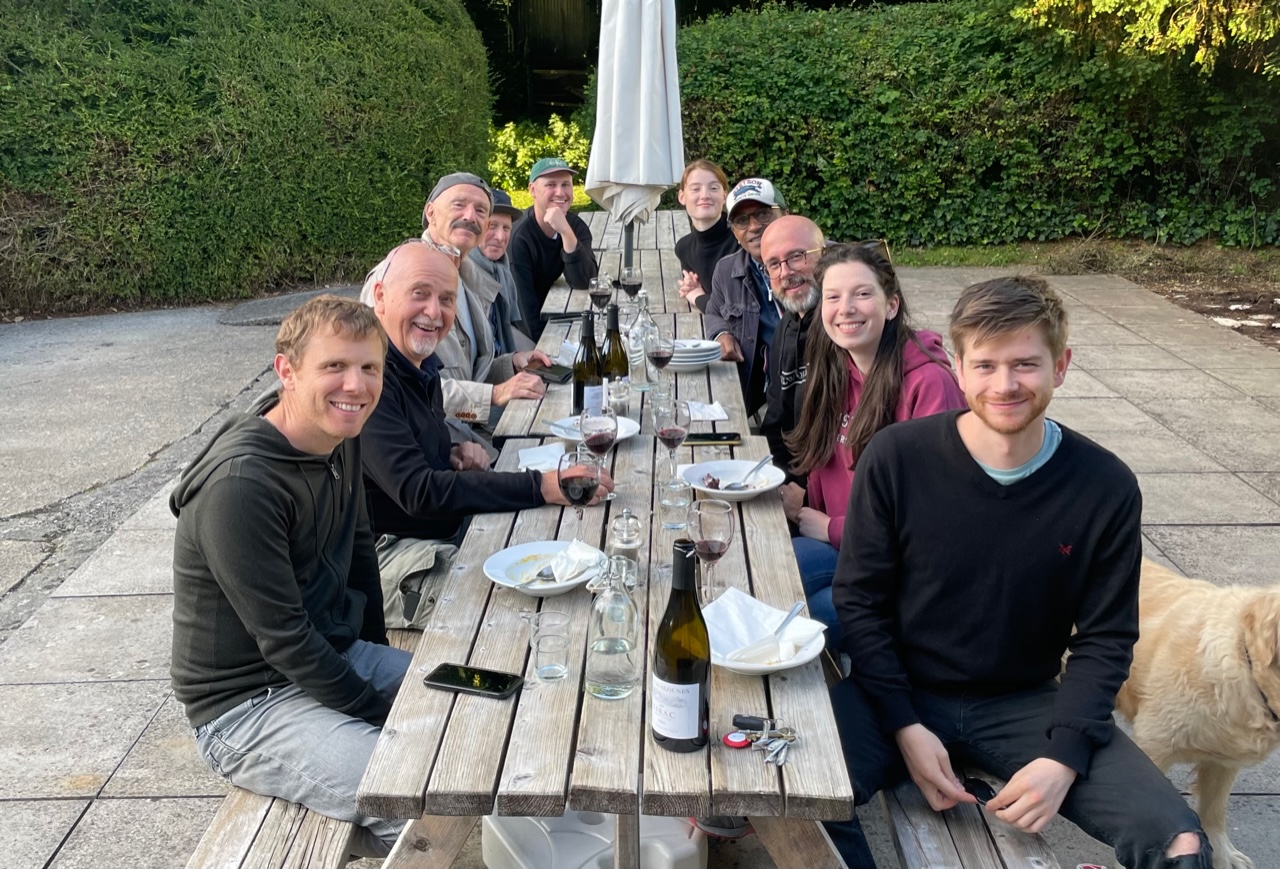
Hans-Martin Buff with Peter Gabriel and his band and crew during the album sessions for i/o. Photo: Rebecca Smith From left: Stuart McCallum (The Breath, plays on Panopticom In-Side Mix), Peter, Tony, David, Oli Middleton (assisted durind the last band recording), Katie May (Peter’s Recording Engineer and Co-Head Engineer), Manu, Buff, Faye Dolle (Peters studio-assistant), Oli Jacobs (Head Engineer and between 2020 and mid-2022 Peter’s Recording Engineer), Rafa (the dog).
GNC: But at some point you did meet up?
Hans-Martin: There was an occasion when Oli came into the studio with a grin and said: “Peter said maybe we could do something together. You with his music. But he can’t play it for you yet because it’s not good enough.” And I thought: exactly. He’ll have to make an effort first, that Peter Gabriel, until it’s good enough for me (laughs). You know? And I thought: good God – what kind of place is this, it’s totally awesome.
But the first time I met him was at a listening session in December 2021 at the Dolby headquarters in London and I played him what I was doing with Atmos on speakers. He thought that was great and then we booked a week to try out whether he, Atmos and I would work out together. Then came what I’ve already told you, that I was simply handed the whole hard drive: “do what you want”. So I enthusiastically messed around with Four Kinds Of Horses. He enjoyed it, too, and off we went.
GNC: What I also find impressive is how much creative freedom you had. In other words, that people weren’t looking over your shoulder the whole time.
Hans-Martin: That’s great – I do get benevolent but nevertheless enormous envy from really, really great engineer friends of mine, especially because I didn’t have to waste a thought on stereo. Because everyone else has to – and I usually do too. Normally you just get a companion stereo mix somehow and stereo and Atmos have to sound as similar as possible. Meaning the basic vibe has to be the same.
GNC: Exactly. So, if you listen to the way Steven Wilson produces, he does his stereo mixes first and then slams the panoramas to the rear.
Hans-Martin: I wouldn’t do it that way, but you can do either approach. So, if Peter were to give me the tracks from Sledgehammer, for example, then I could copy the stereo mix pretty well and pretty quickly. One of the difficult things about mixing is adding in your own creativity. You think: “How would this be cool?”. And everyone’s “cool” is different. It takes quite a long time to find the right balance.
Even in your own mind, of course under the guidance of the artist. If the “cool” is already defined, if I can already hear how it should be, then I get it right quickly and I only make it better. And then I can think about how to make a great Atmos mix. But of course it’s much, much more creative and also more open if you don’t have to make this comparison, if you can create from scratch. It’s a great thing.
GNC: How much “from scratch” was that with i/o? Did you actually just get the tracks as separate files or were you able to start with a finished session?
Hans-Martin: I got a Protools session with all the tracks. There were already a few processing plug-ins on the individual sounds. The other two mixers also got that – exactly the same as me.
GNC: Were there also deactivated or muted tracks [alternative recording tracks] in the sessions that you could listen to?
Hans-Martin: In the beginning there were loads of so-called playlists, i.e. earlier or alternative versions of the same track – and that was super helpful in some cases: Peter has an incredible memory for the steps of the production process. He can actually tell you: “Hey, we once recorded this water glass on this one track. I think it was in August 2017 or something.” And then his assistant Faye Dolle goes off and finds it relatively quickly. Because he’s such a creative juggernaut, his studio team also keeps everything. When he’s noodling around creatively in his writing room, they record everything. His keyboard sound, but also MIDI, and that’s great of course. If I need to make a keyboard sound bigger, for example, then I can take the MIDI and tinker with a few things.
GNC: Let’s assume, hypothetically, that you were told to make an Atmos mix of Come Talk To Me. Then you’d get something old, which was completely different in its creation. Would that be a problem or would that be a different approach for you? Because you probably can’t add anything to it.
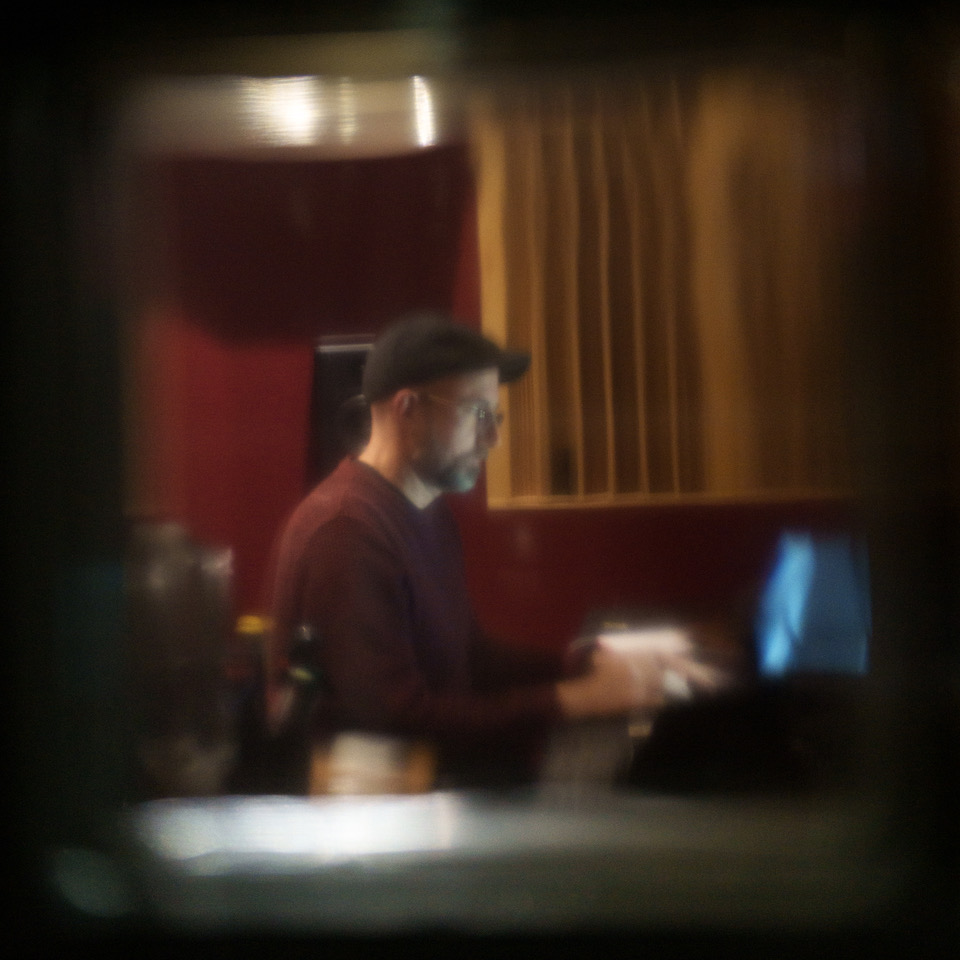
Hans-Martin: Oh, don’t underestimate me (laughs). But I’ll cross that bridge when I get to it. I think something like Solsbury Hill would be harder to mix, because that was probably recorded relatively economically – I’m assuming 24 tracks, but no more. Whereas something like Come Talk To Me or my favourite song Digging In The Dirt (which I would love to mix) has so much stuff in it that the arrangement makes an Atmos version possible. The most difficult songs on i/o were also the ones with the most simple arrangements. It’s a challenge to turn them into something special in Atmos. The song i/o itself, for example, made me sweat a lot. Or So Much: although I think it’s a very good Atmos mix, it’s not a huge step forward compared to the stereo mix.
GNC: Gabriel said himself that it was a simple number.
Hans-Martin: Yes – luckily I was there for the piano recording, so I had the necessary material to make the piano nice and big. But if it had just been a stereo piano, it would have been difficult.
GNC: Have you ever worked with upmix plug-ins? Like Penteo or something like that?
Hans-Martin: Yes – I sometimes use it for individual tracks out of many, here and there. But not on the whole song. Upmixing is also rightly frowned upon – well, for those who don’t know what upmixing is: Basically, you take a sound that isn’t three-dimensional and blow it up with a tool as if it were. It’s like artificial stereo in the 60s. You have to be careful with that. I mean, if it sounds good as part of an arrangement, it’s great, but to put an upmixer on a whole song is a total nono.
GNC: I’ve noticed that a 5.1 mix has a completely different mood and atmosphere than the Apple Music mix – i.e. the one on stereo headphones. How can you explain this to a layman? What does the home receiver do with the Atmos mix on the Blu-ray to get 5.1 out of it? Is there another separate mix hidden somewhere?
Hans-Martin: The whole idea of all this Dolby stuff comes from the cinema. There was always the following problem: If, say, I now have a great film sound in which a train moves from the back to the front, how do I do that if there are 12 speakers in one cinema, 100 in another and only five the next? Do I then make 20 different mixes for different cinemas with different loudspeakers? So the clever people at Dolby said: No, we’ll make something like a sound suitcase.
The sound, for example that of the train, goes into it, and then the information, the so-called metadata, about where the mixer says it should move. Later, on the cinema side, there is an unpacking device for this sound suitcase, a decoder. In the cinema, the room has been calibrated beforehand, so the decoder knows “I have x speakers to work with”. And then the decoder sees a) the sound of the train, and b) the command “from back to front” in the sound suitcase. And if there are 100 loudspeakers in the cinema, then the decoder sends the train via the 40 loudspeakers on the side, and if there are only five loudspeakers, then it only sends the train via the two loudspeakers that are on the side of the smaller cimena.
This “sound suitcase” is then also what comes through via Apple Music. In the Apple device, your receiver, i.e. the unpacker, recognises what playback device you have there. And if it’s headphones, the contents of the case will be repacked to headphones, if there are five speakers, to five speakers – there’s not just 5.1, 7.1 and then 7.1.4, but there’s also 5.1.4. You can always screw something to the ceiling, after all. So there are various configurations. It doesn’t always have to be 9 or 7 at the bottom.
This whole system is of course great on the one hand, because it works in so many environments, but at the same time enormously frustrating for creatives, because if Apple feels like changing the headphone algorithm, then the same mix that I have delivered will sound different on headphones. Because the unpacker works differently.
GNC: Has that ever happened before?
Hans-Martin: All the time.
GNC: There are people on social media who report a downmix of the In-Side mix on YouTube. That can’t really be anything other than trying to squeeze the effects from the Atmos mix into a stereo format. Is that even possible?
Hans-Martin: Yes, you can do that. When I work with Dolby Atmos, I have a suitcase packer for the sound suitcase, which is the so-called renderer. My studio software sends my sounds and sound decisions to it and then I can tell the renderer: “Spit this out ready for 5.1”. And then I could send it to you just as these 6 tracks for these 6 speakers. I can also do this for stereo, but it certainly doesn’t sound great.
GNC: Well, what I immediately noticed with The Courtand i/o is that there are very concise drums and percussions that are much louder and more prominent than in the stereo mix. Would that be an effect that would also come out in a stereo downmix?
Hans-Martin: In this context, I also learned something that has made me very unhappy. Apple Music in particular: As soon as the Apple playback device knows that it can play Dolby, the Dolby mix is also played. If this end player is capable of Dolby Atmos but only has stereo connected, the Atmos mix is packed into stereo, i.e. the In-Side mix plays in stereo, not the Dark-Side mix, which would be included. Which I think is really stupid. But I actually thought about whether I should compare the big Atmos mix to these so-called downmixes – to make sure it also sounds great in stereo and also in 5.1 and so on. But then I decided against it – because: that’s not what it’s made for. I mean, 5.1. should at least sound good, and fortunately I’m pretty sure that’s the case.
But I deliberately decided agains the idea that the In-Side mix folded to stereo should be able to compete in any way with the Dark-Side mix or the Bright-Side mix. I also read a comment from some geek: ‘Buff has really gone out on a limb mixing with such masters. His stuff has far too little depth’ and who knows what else. He must have heard it as a stereo version, which lacks both the technical and creative means used to generate depth in a stereo mix, as well as their three-dimensional equivalents, which don’t work in stereo.
GNC: Yes, there are differences.
Hans-Martin: Well, someone who mixes the Dunesoundtrack is constantly listening back and forth between the big Atmos cinema thing and the 5.1 thing and then the stereo thing – because it’s a mix that has to work in all situations. Right away in the cinema, on the 5.1 system that some people have, and in stereo on TV, whatever. It’s quite clear that one mix should serve them all. Mine doesn’t have to.
GNC: But you probably put your headphones on from time to time and listened to the binaural version of it?
Hans-Martin: I did that quite often, right from the start. My setup was always binaural at the beginning, then I went into Real World Studios and set up the sound and when it sounded good, I listened to it again with the Apple headphone sound. Because I assume that the vast majority of people will hear the mixes that way and the mixes have to work in headphones.
GNC: Did that take priority for you, the headphone mix?
Hans-Martin: That would be the wrong thing to say, but if something didn’t work in the headphones, then I revisited the mix and made adjustments.
GNC: You can tell.
Hans-Martin: For example, in the first mix of Playing For Time, the bass was much louder and much deeper. And then I put the headphones on… and it didn’t work at all. So, of course, I had to adjust my mix so that it worked on headphones, because that’s how most people hear it. Incidentally, I don’t have a multi-channel setup here at home, so I’m one of those people who listen to Atmos on headphones.
GNC: I [Tom] would always like to do that too, but unfortunately it doesn’t work for me. I have a 63 cm head circumference and the phase relationships are somehow different. It sounds like a normal, different stereo mix on headphones. But I have no spatiality.
Hans-Martin: Very interesting. I vaguely remember a statistic according to which most people can hear binaural sounds without any problems, 10% really can’t hear binaural, and then there are 10% of people who just think the headphone 3D stuff is stupid and don’t want to hear it (there are quite a few haters in this business). There are certainly also various technical problems in these processes, which have the result that the added value of 3D compared to stereo in headphones is much smaller than the added value of stereo compared to mono. There is often no immediate ‘wow’ effect, and the magnitude is first revealed in comparison with stereo.
GNC: Peter did pioneering work with his 5.1 mix of Up. And then the Genesis albums also came out on SACD, which again generated a lot of interest. I think it remains a niche programme, but if you’re into it – it’s worth it.
Hans-Martin: There are a lot of things coming that will make listening easier. They won’t be expensive either, and they’ll eliminate the whole calibration problem. There’s also a development for cars. The more expensive models already have Atmos with loudspeakers, so we’ll see when the others get it, too.
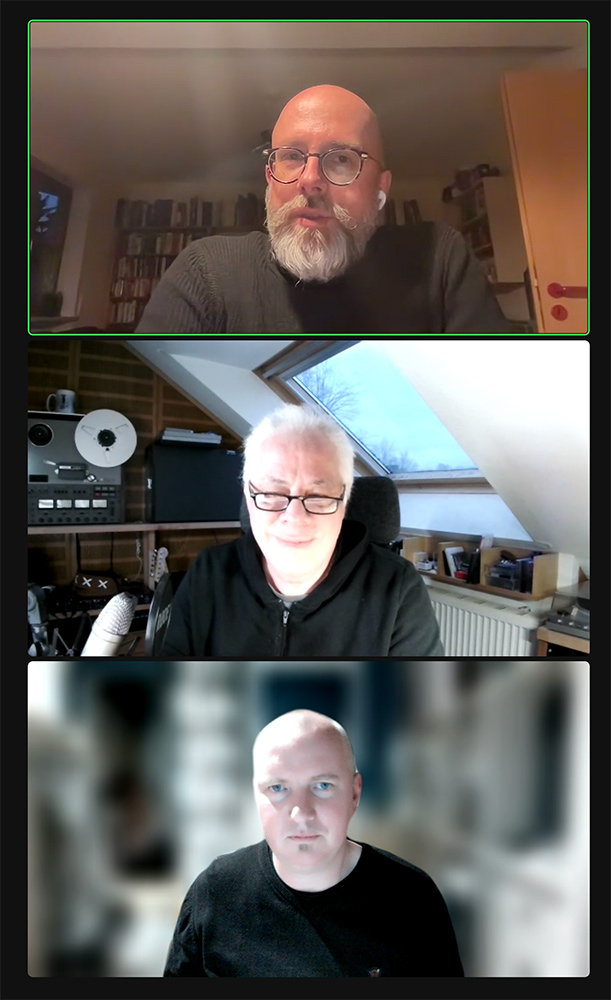
I’m really happy that I’m getting this great feedback for the i/o In-Side mix, but of course you’d need 20 mixes of this level every year and – more importantly – music made for Atmos by new bands. I also think it’s great that Peter Gabriel was the first to realise i/o for Atmos and not Soor US. So, not something where everyone already had an opinion on how ‘cool’ it is. But something where you could redefine ‘cool’.
GNC: You were mainly in the Red Room at Real World Studios. I was there myself 8 years ago. Is the room in one of the small buildings in front or is it in the main building?
Hans-Martin: The Red Room is in the main building. If you stand at the back of the Big Room and look at the window, there are doors on the left and right. If you go out to the left, the Red Room is halfway to the Wood Room. The Red Room used to be one of the production and mastering rooms. A producer rented a room there for a long time. Long ago, the entrance used to be at this location.
GNC: Something completely different: many people are selling the rights to their stuff, Genesis have also gone down this route. It’s not very transparent for the layman. Can you explain what exactly happens there? As we understand it, the bands and artists sell their rights to others and then don’t see any more money from it or for it.
Hans-Martin: No, it’s a bit different. A publishing company is like a record company for compositions. Not for recordings, like an actual record company, but for compositions. In every country there are one or more organisations, usually not private, that manage this and then collect the money for it. In Germany, this is GEMA. They also determine what the writers’ share of the copyright is. Example: you write a song and give it to my publishing company in the hope that I will give it further exposure.
If the song is played on the radio, then you get just under 70% and I get 30% of the royalties, so you only give away a piece of the royalties. But you keep the copyright, which you can’t lose, at least in this country, unlike in the USA, for example. The copyright is valid for as long as you live plus 75 years. This means that if a musician dies, their heirs will receive money for the things he has written for another 75 years. After that, you don’t have to ask anyone anymore, then it’s copyright-free. However, if you get a lot of money in advance from a publisher for signing with them, as a songwriter you won’t get any more money until this advance money has been recouped from your own share.
GNC: Ah, thank you. – Finally, do you still do normal stereo productions?
Hans-Martin: I still do normal stereo stuff for people I’ve been working with for a long time. At the moment I’m not actively pursuing new stereo productions, but I’m not saying no to them, either. However, Atmos is my main topic at the moment.
By the way, I find what you do really exciting: a Genesis fan club. If I were to put From Genesis To Revelation, So, Invisible Touch and The Lamb Lies Down On Broadway in the same bag and turn it into a single fan club, my head would explode.
GNC: There aren’t that many people who like everything, but the range is what makes it so appealing.
Hans-Martin: One of my first concerts was in front of the Berlin Reichstag in 1987. It was a package deal with Bowie, Eurythmics and Genesis. That was the tour for Invisible Touch and to be honest: I personally quit Genesis after the Mama-record. I hope I don’t get any hate mails from your Invisible Touch fans now. But anyway, I was at the show. And they were so good. It was such a great show. With these guys who don’t do much on stage.
Only one guy did something, a smaller one with thinning hair who also played the drums. It was such a weird concert, but so cool. And I thought ‘wow’ and then I rediscovered the band backwards. – I didn’t come from a pop music family myself and didn’t have any older siblings who had experienced that stuff. And for me, going backwards I stopped at The Lamb. I didn’t particularly like the stuff before that, but Lamb was great. The Lamb Lies Down On Broadway, that’s a trip I’ve always liked.
GNC: Thank you very much for your time and the interview!
Hans-Martin: Thanks. It was great fun for me, too.
Interview: Thomas Morgenstern and Christian Gerhardts (via Zoom on Februar 29th, 2024)
Transcript: Christian Gerhardts und Thomas Schrage
Editor: Thomas Schrage & Hans-Martin Buff
Hans-Martin Buff related Links
i/o Listening Session in the msm-studios Berlin (report)
Hans-Martin Buff at Discogs
Hans-Martin Buffs Playlist (AppleMusic | Spotify)
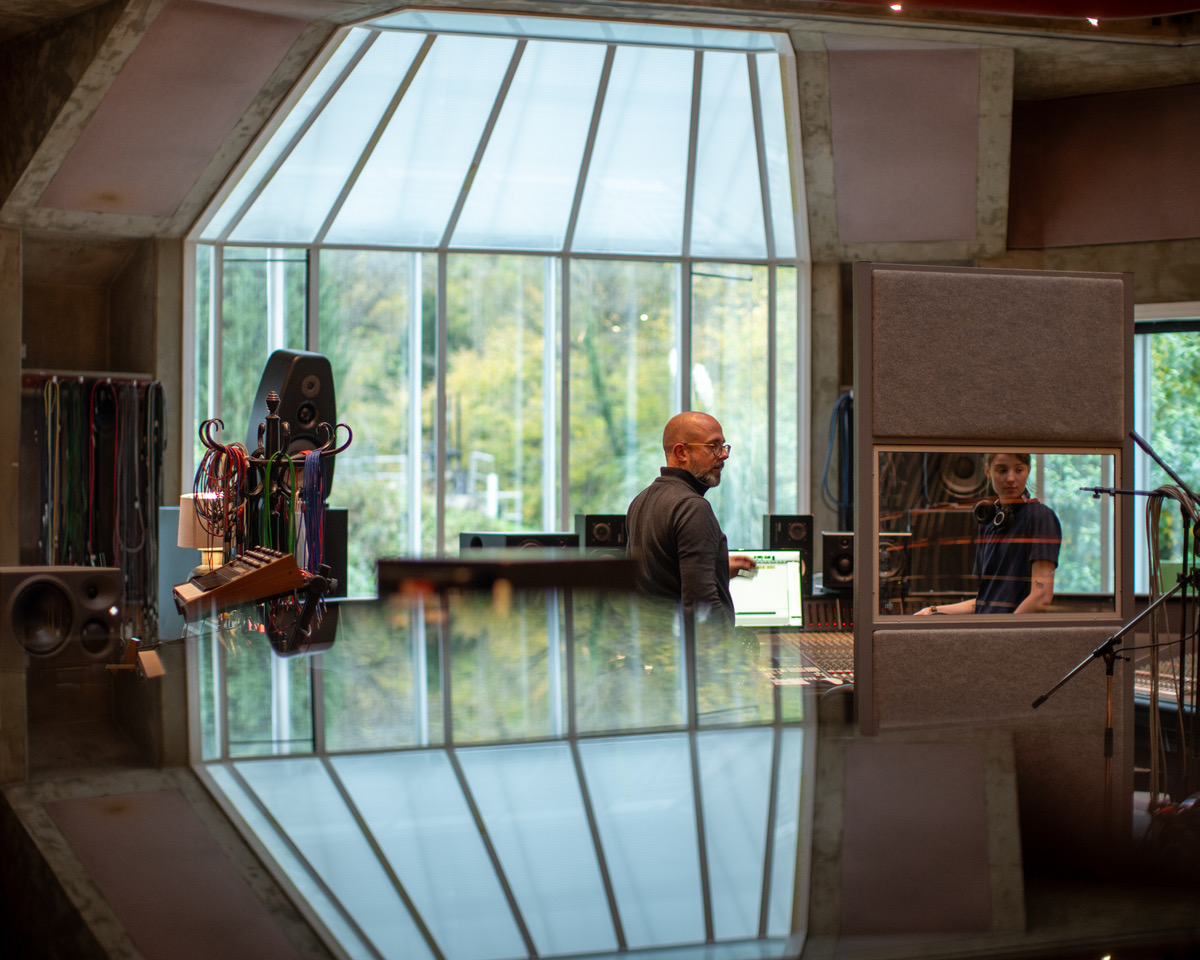
GNC now has a WhatsApp Channel. Get all news and new articles on your smartphone. Click here to join the channel

